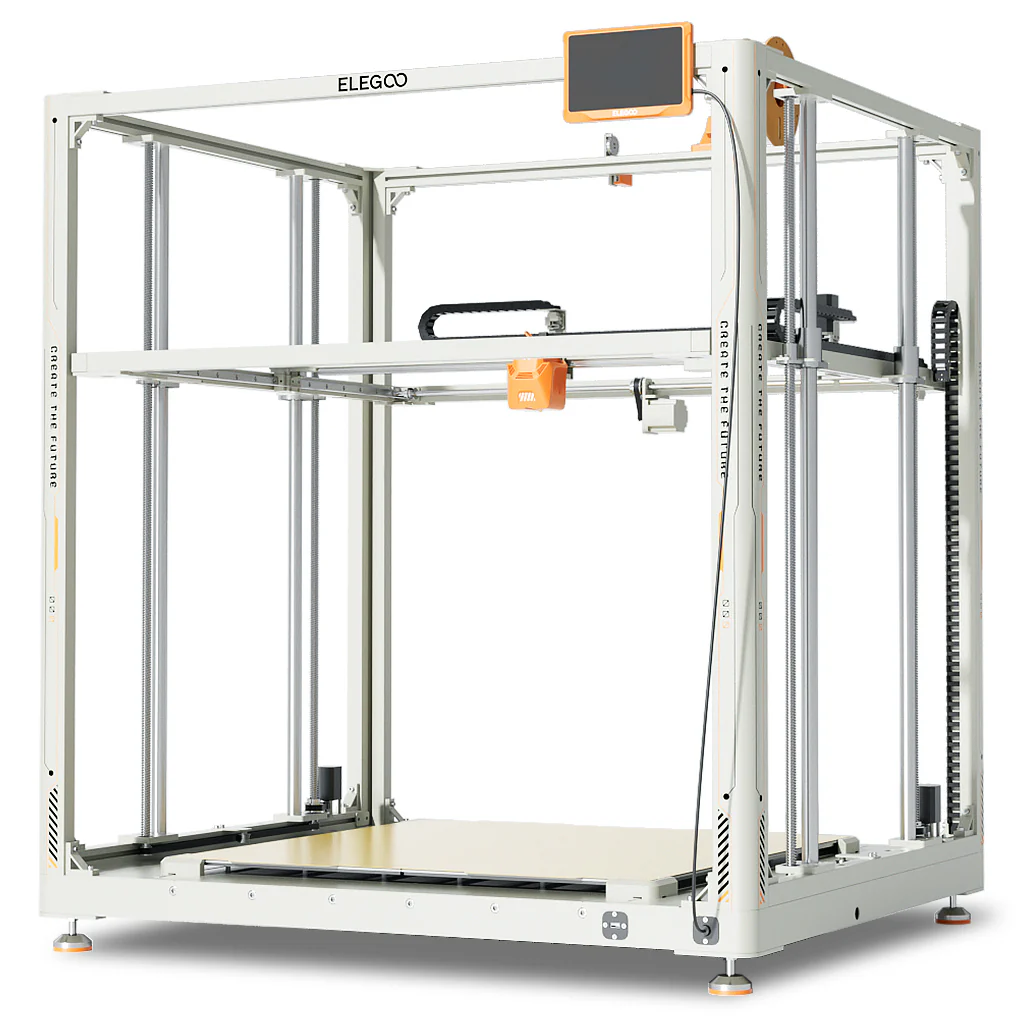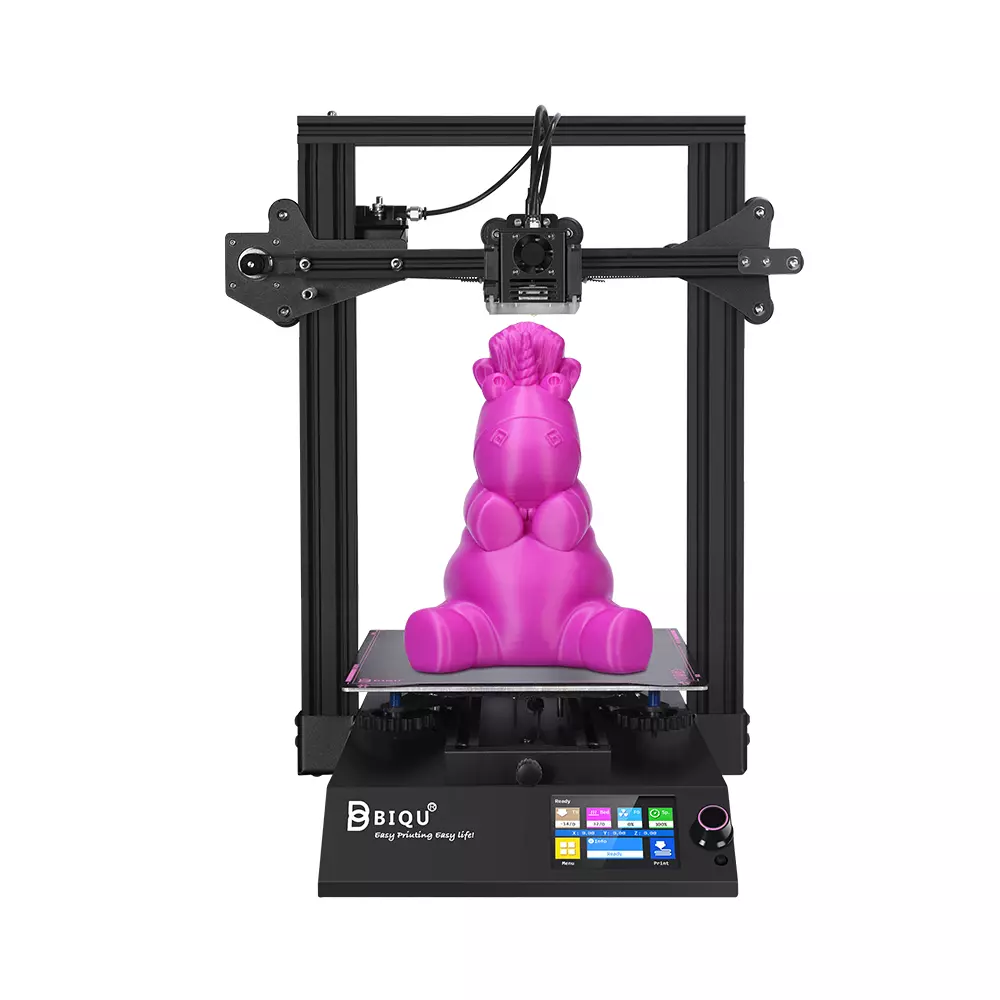Compare Orange Storm Giga vs BIQU B1
Comparison between the best 3D printers
Choose the best 3D printer at the best price. The cheapest 3D printers are here.
Buy a 3D printer here with 3D Fila.
 |
 |
|
| Model | Orange Storm Giga[BUY Orange Storm Giga] |
BIQU B1 |
| Printing Material | Filament | Filament |
| Buy Filament for Elegoo Orange Storm Giga | Buy Filament forBigTreeTech BIQU B1 | |
| Estimated price | $2500,00 | $269,00 |
| Manufacturer | Elegoo | BigTreeTech |
| Release Year | 2024 | 2020 |
| Print Volume [mm] | 800x800x1000 | 235x235x270 |
| Printer Size [mm] | 1000x1000x1200 | 412x402x492 |
| Weight [kg] | 136 | 8,00 |
| Power Loss Recovery | YES | YES |
| Enclosed printer | NO | NO |
| Bed Leveling | Automatic | Manual |
| Filament End Sensor | YES | YES |
| Bed type | Heated | Heated |
| Power supply system | Direct Drive | Bowden |
| Standard nozzle | 0,4 | 0,4 |
| Maximum Nozzle Temperature [°C] | 300 | 250 |
| Maximum Bed Temperature [°C] | 90 | 100 |
| Maximum printing speed [mm/s] | 300 | 100 |
| Filament holder | YES | YES |
| Camera for supervision | NO | NO |
| Recommended filaments | PLA, ABS< PETG, TPU | PLA, TPU, ABS, PETG |
| Recommended slicers | Elegoo Cura | Cura, Simplify, Slic3r |
| Maximum Resolution [mm] | 0,1 | 0,1 |
| Processor | 32 Bits BTT SKR V 1.4 | |
| Display | Touchscreen 7'' | Touchscreen TFT 3,5'' |
| Power Supply | 24V / 360W | |
| Connectivity | USB, LAN, Wi-Fi | SD / USB |
| Operating systems | Windows, Linux e Macbook | Windows, Mac, Linux |
| Date of registration in the system | 2024-10-09 | 2021-04-14 |
| Release date | 2024 | 2020 |
| Extra features | The Elegoo Orange Storm Giga stands out for its huge print volume of 800 x 800 x 1000 mm and its modular heated bed system with four independent zones, ensuring energy efficiency. It supports printing with multiple nozzles, allows print recovery after power failures and uses Klipper firmware, optimizing speed and quality. The portable 7-inch touchscreen and USB, Wi-Fi and LAN connectivity make operation more accessible and versatile. | The BIQU B1 is an advanced 3D printer with a silent 32-bit BTT SKR V1.4 motherboard and ARM Cortex-M3 CPU, offering DIY interfaces (I2C, SPI, WiFi) and dual Z-axis. Its dual BTT B1 TFT35 V3.0 operating system allows real-time monitoring and multiple printing modes, including G-code visualization effects. It stands out for its BIQU SSS (Super Spring Steel), ensuring easy model adhesion and simplified removal, with the possibility of using it on both sides. It includes a filament sensor, automatically pausing printing in case of filament breakage. The multicolored RGB lights integrated into the hotend allow you to view the printing status even at night. Additional notes include the need for a BIQU-specific Type-C cable and extra interfaces for smart filament sensor and BL Touch. |
| Support for multiple colors and materials (AMS and CFS) | NO | NO |
Notes * |
||
| Cost-benefit | 6 / 10 | 7 / 10 |
| Hardware | 3.6 / 10 | 2 / 10 |
| Tela | . | . |
| Print volume | 10 / 10 | 3 / 10 |
| Performance | 3 / 10 | 1 / 10 |
| [BUY Orange Storm Giga] |
Conclusion |
| In comparing the Orange Storm Giga and the BIQU B1 3D printers, several key differences and advantages emerge that may inform a buyer's choice based on their specific needs. The Orange Storm Giga is a high-end printer with a significantly larger print volume, enabling the creation of larger or more complex models, making it ideal for professionals or serious hobbyists. It boasts advanced features such as automatic bed leveling, a higher maximum nozzle temperature, and faster printing speeds, which enhance its performance capabilities. The printer's modular heated bed system and Klipper firmware contribute to its efficient operation and print quality. The 7-inch touchscreen and various connectivity options (USB, LAN, Wi-Fi) further enhance user experience, positioning it as a versatile choice for users who desire robust performance and convenience. Conversely, the BIQU B1 serves as a more budget-friendly option, suitable for beginners and those who prioritize cost-efficiency. While it may not match the Orange Storm Giga in terms of print volume or advanced features, it offers essential capabilities with manual bed leveling and sufficient temperature ranges for standard materials. Its solid build and additional features like dual Z-axis and filament end sensor make it a reliable choice for users looking to explore 3D printing without extensive investment. In conclusion, choosing between the two printers ultimately hinges on the user's objectives. The Orange Storm Giga excels in performance, volume, and advanced capabilities, making it a preferable choice for serious projects or professional settings. On the other hand, the BIQU B1 offers excellent value for those beginning their 3D printing journey or seeking a more accessible price point, with adequate features to handle a variety of standard printing tasks. |

